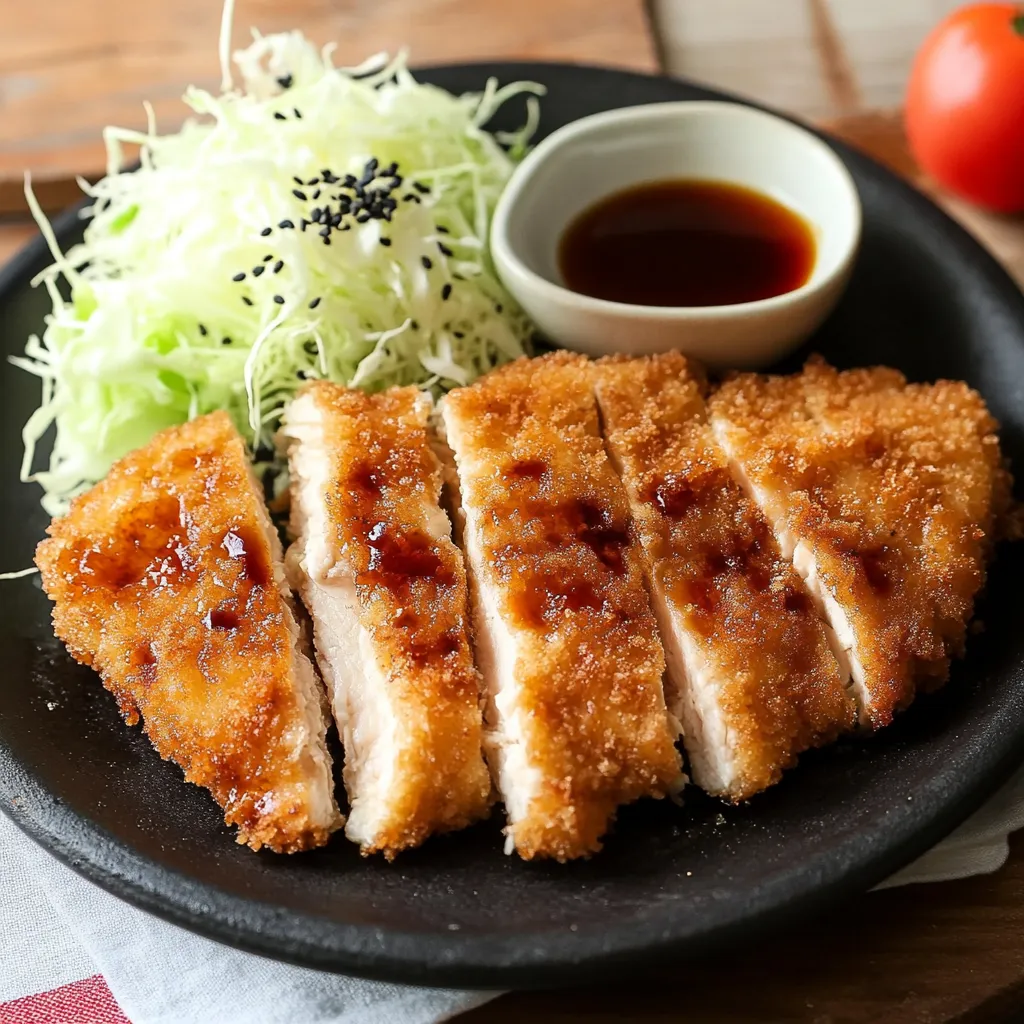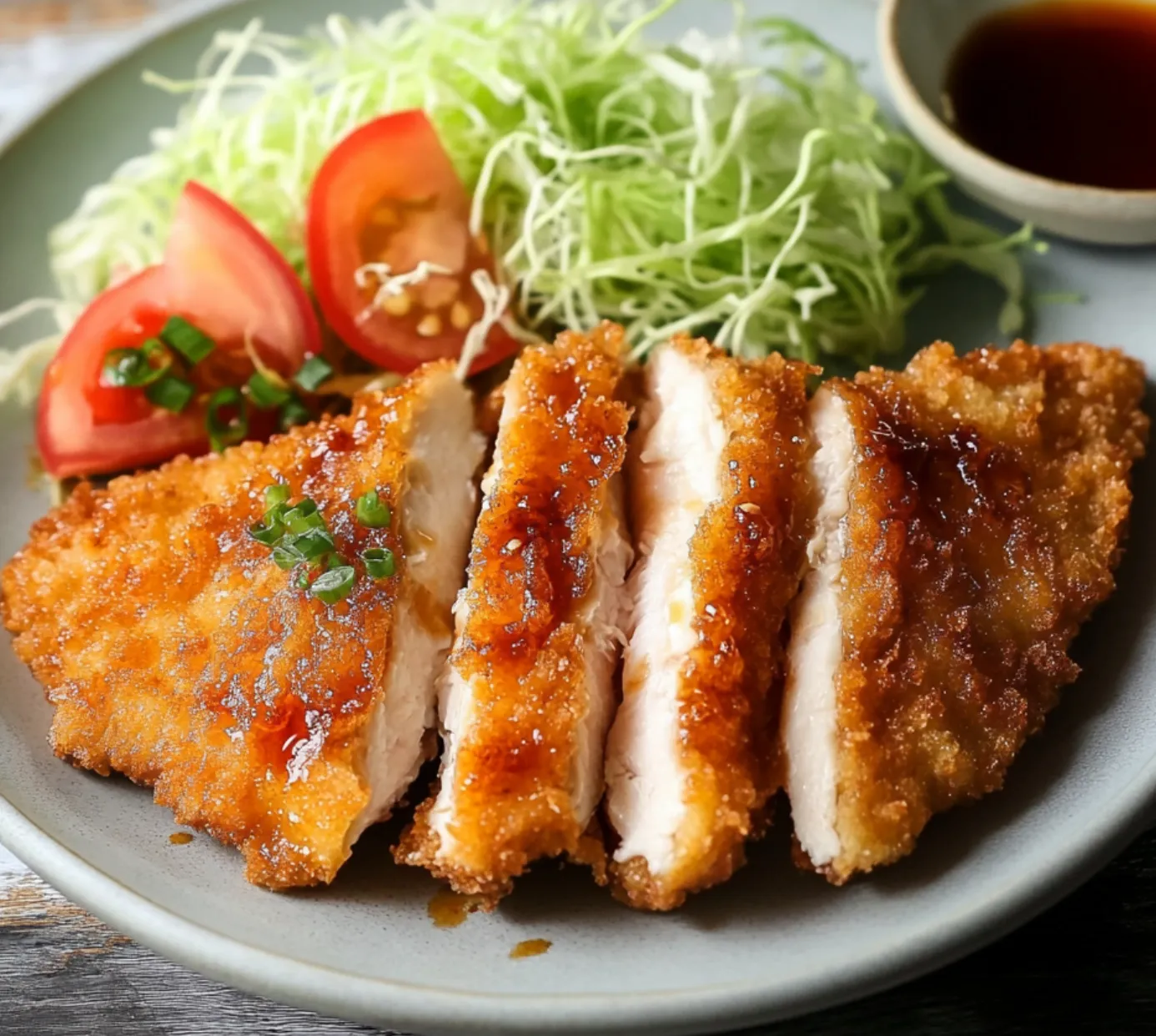 Save it
Save it
Crunchy outside, juicy inside—that's what makes Chicken Katsu so amazing. This Japanese favorite turns plain chicken breast into an incredible cutlet that'll make you forget about takeout completely.
I found this dish while trying out Japanese cooking at home, and now it's my go-to way to make boring chicken breast taste fantastic. When you hear that first bite crack, you'll know you've nailed it.
Key Ingredients Breakdown
- Boneless, skinless chicken breast: Pick a nice 270g piece for the right texture. Cut away any fat bits before you start.
- Diamond Crystal kosher salt: Works best because its lighter crystals spread the flavor without making things too salty.
- Freshly ground black pepper: Adds some kick and flavor depth. Always grind it fresh if you can.
- All-purpose flour: Helps the egg stick to your chicken in an even layer.
- Panko (Japanese breadcrumbs): These bigger, fluffier crumbs make your coating super crispy. Make sure they're fresh.
- Large egg: Holds everything together. Should weigh about 50g without the shell.
- Neutral oil (for the egg mixture): Just a bit makes the egg coat more smoothly.
- Neutral oil (for frying): Go with veggie or canola oil that can handle high heat. Pour enough to get 1½ inches deep for even cooking.
- Tonkatsu sauce: This sweet-tangy sauce is the perfect match for your crispy chicken.
- Shredded green cabbage (optional): Gives a fresh crunch next to the fried chicken.
- Japanese sesame dressing (optional): Tastes nutty and creamy on cabbage.
- Tomato wedges (optional): Adds juicy freshness that cuts through the richness.
Step-by-Step Cooking Guide
- Butterfly the Chicken
- Put your hand flat on the chicken breast and cut sideways through it, opening it up like a book.
- Seasoning
- Sprinkle salt and pepper on both sides, then wait 10 minutes for the flavors to sink in.
- Breading Station
- Get three dishes ready with flour, beaten eggs mixed with a splash of oil, and panko.
- Coating Process
- Roll chicken in flour and tap off extra. Dunk in egg mix and let drips fall off. Press firmly into panko to cover completely. Wait 5 minutes for coating to set.
- Frying Process
- Get your oil to exactly 350°F (175°C) using a cooking thermometer. Slide the chicken in gently—it should sizzle right away but not too wildly. Cook 4-5 minutes each side until golden brown.
- Resting
- Put it on a wire rack instead of paper towels so it stays crispy all around.
 Save it
Save it
My neighbor from Japan told me good katsu should make a crackly sound when you cut it—that special noise means you've got the perfect crust. Her trick was pressing the panko coating twice for extra crunch.
Crucial Cooking Points
- Temperature Management: Pay close attention to your oil heat—too hot burns the outside while the inside stays raw. Too cool makes everything soggy and oily.
- Breading Technique: Keep one hand for dry stuff and one for wet. This stops your fingers from getting all gunked up with breadcrumbs.
Smart Storage
Let it cool all the way before putting it in the fridge or freezer to keep it crispy. When you want to eat leftovers, warm them in the oven instead of the microwave to bring back the crunch.
Plating Ideas
Slice your katsu at a slight angle to show off those layers, and serve it right away while it's still super crispy.
Make Your Own Sauce
Store-bought sauce works fine, but mixing Worcestershire, ketchup, and soy sauce makes a tasty homemade version.
After making tons of katsu, I've learned that taking your time is what makes it great. The right oil temp, careful coating, and proper resting create something truly special. The best katsu has that perfect balance—crunchy outside, moist inside, and that satisfying crack that makes everyone at your table grin.
 Save it
Save it
FAQ sur la recette
- → Can I make this chicken katsu without frying?
- Absolutely! You can bake it using less oil, and it still gets great crunch and flavor.
- → How should I store leftovers and warm them up?
- Keep leftovers in the fridge for two days or freezer for a month. Heat at 350°F for about 15 minutes from the fridge or longer if frozen.
- → Why add oil to the egg dip?
- It helps keep the breading on better and makes the chicken juicy.
- → What oil temperature works best for frying?
- Keep it at around 340°F (170°C) for crispy, perfectly cooked katsu.
- → What pairs nicely with chicken katsu?
- Shredded cabbage salad, tonkatsu sauce, sesame dressing, and steamed rice make an ideal combo.
